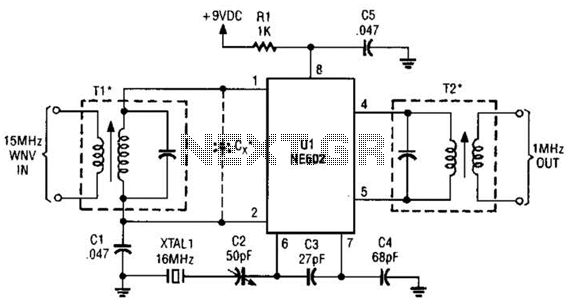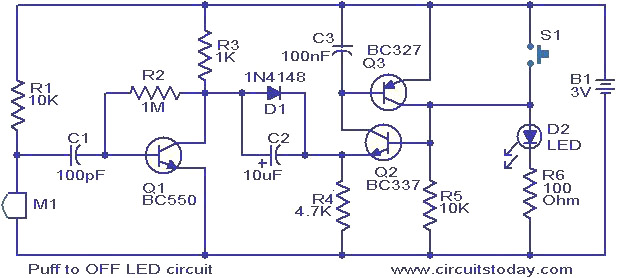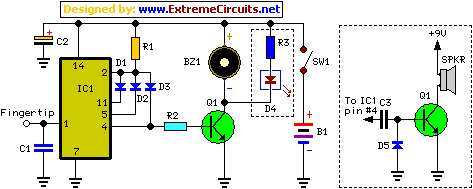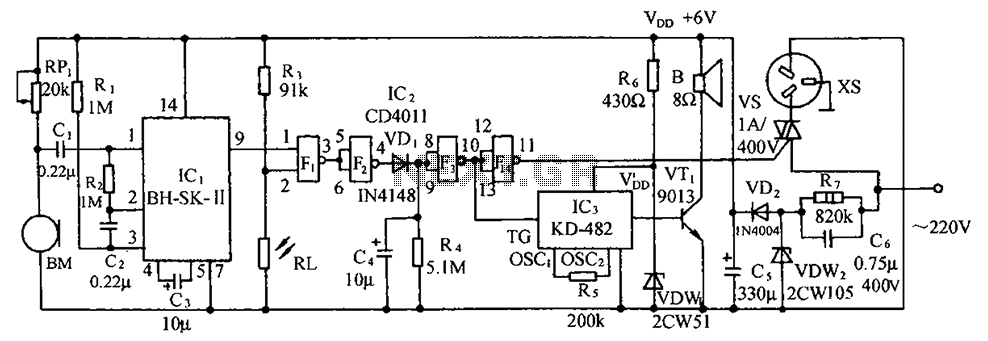
TDA8350Q test circuit diagram
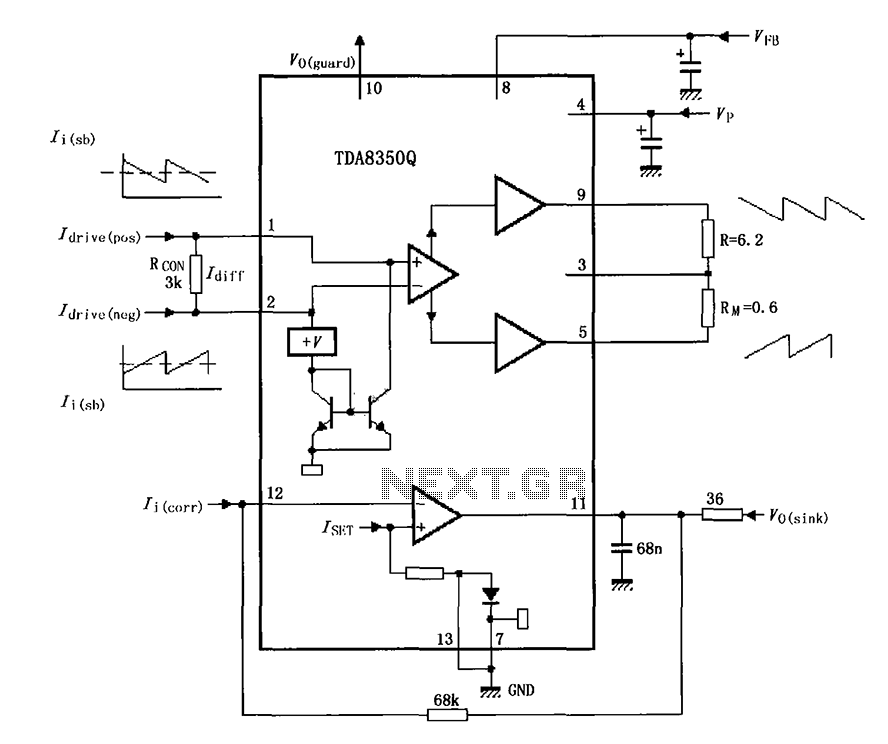
The TDA8350Q test circuit includes a push-pull amplifier configuration where the output terminal resistor serves as a dummy load for testing an alternative deflection coil.
The TDA8350Q is a high-performance integrated circuit designed for use in television and display systems. In the context of the test circuit, it is configured as a push-pull amplifier, which effectively drives the output stage to deliver the necessary power to the load. The use of a push-pull arrangement allows for improved efficiency and reduced distortion in the output signal.
In this specific setup, the output terminal resistor plays a crucial role as a dummy load. This is particularly important for testing the performance of alternative deflection coils, which are essential components in CRT (Cathode Ray Tube) displays. The dummy load simulates the characteristics of a real deflection coil, allowing for accurate assessment of the amplifier's performance without the need for a physical coil during testing.
The circuit typically includes input and feedback components to stabilize the amplifier and ensure linear operation. The TDA8350Q will require appropriate biasing to operate in its optimal range, and the values of the resistors and capacitors used in the circuit must be carefully selected to match the specifications of the deflection coil being tested.
Overall, this configuration allows engineers to evaluate the amplifier's output capabilities, thermal performance, and response characteristics under controlled conditions, facilitating the development and troubleshooting of display systems. As shown for the TDA8350Q test circuit, the circuit is in the push-pull amplifier output terminal resistor as a dummy load testing alternative deflection coil.
The TDA8350Q is a high-performance integrated circuit designed for use in television and display systems. In the context of the test circuit, it is configured as a push-pull amplifier, which effectively drives the output stage to deliver the necessary power to the load. The use of a push-pull arrangement allows for improved efficiency and reduced distortion in the output signal.
In this specific setup, the output terminal resistor plays a crucial role as a dummy load. This is particularly important for testing the performance of alternative deflection coils, which are essential components in CRT (Cathode Ray Tube) displays. The dummy load simulates the characteristics of a real deflection coil, allowing for accurate assessment of the amplifier's performance without the need for a physical coil during testing.
The circuit typically includes input and feedback components to stabilize the amplifier and ensure linear operation. The TDA8350Q will require appropriate biasing to operate in its optimal range, and the values of the resistors and capacitors used in the circuit must be carefully selected to match the specifications of the deflection coil being tested.
Overall, this configuration allows engineers to evaluate the amplifier's output capabilities, thermal performance, and response characteristics under controlled conditions, facilitating the development and troubleshooting of display systems. As shown for the TDA8350Q test circuit, the circuit is in the push-pull amplifier output terminal resistor as a dummy load testing alternative deflection coil.
